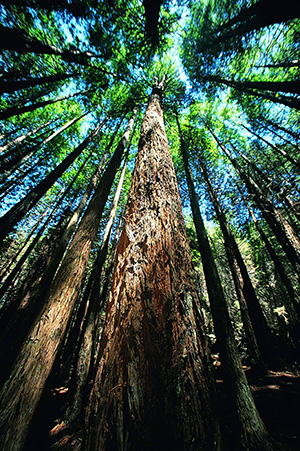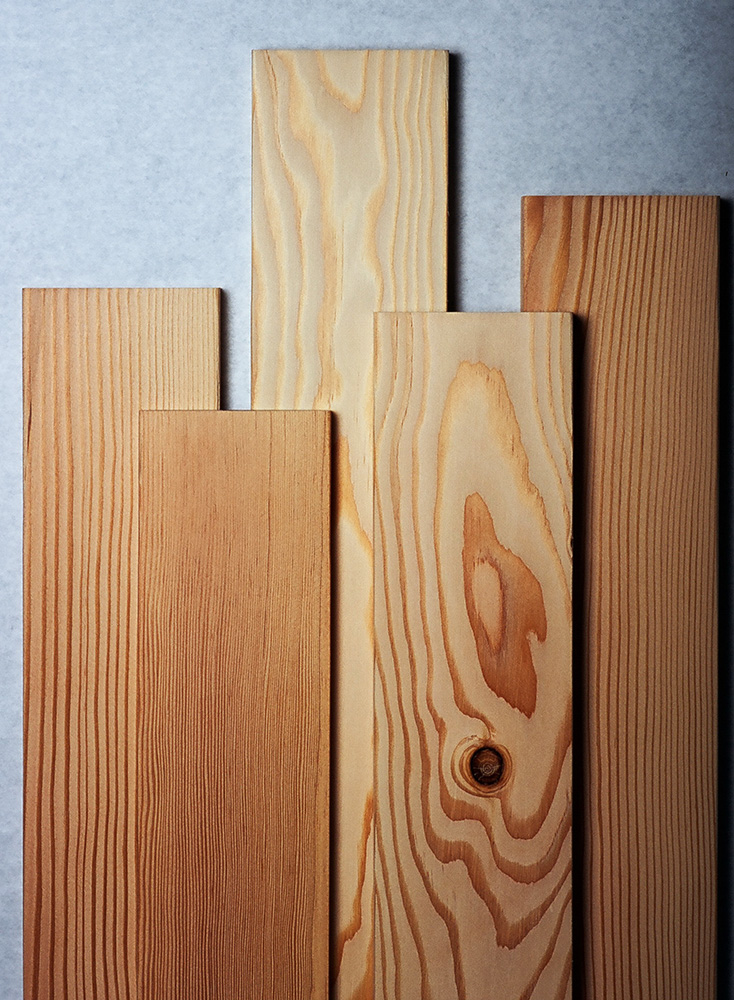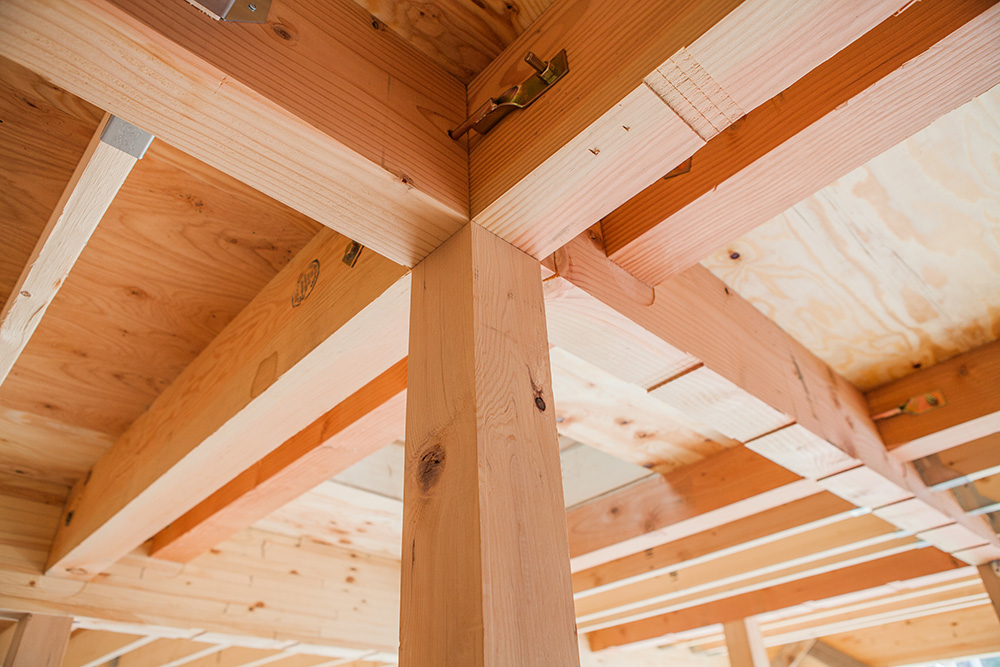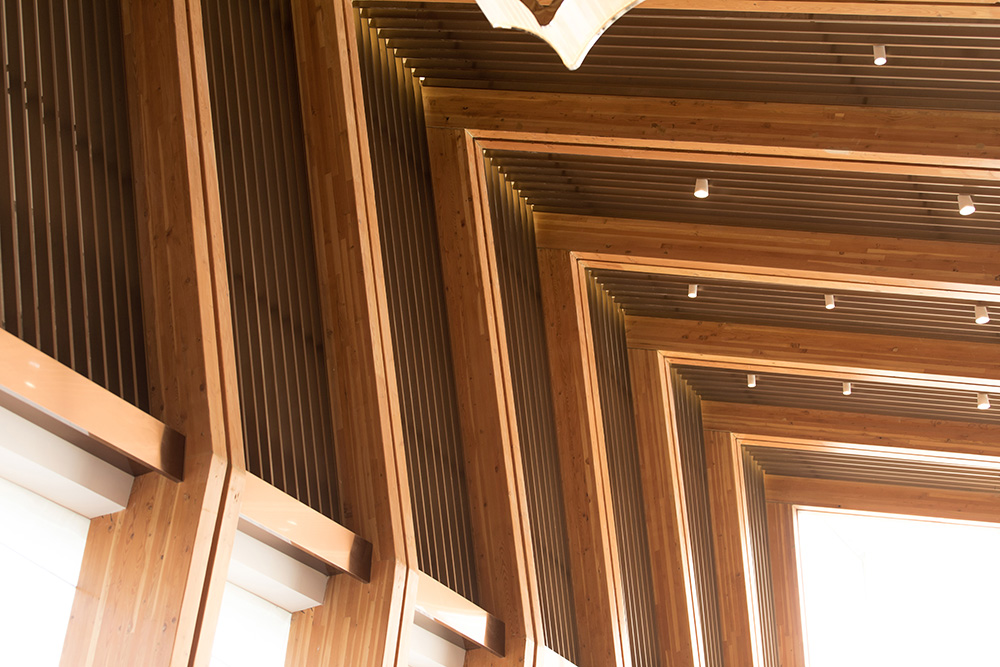Douglas Fir

Douglas-fir (Pseudotsuga menziesii) is one of the world’s best-known and widely used wood species. There are two varieties of Douglas-fir British Columbia: Coastal and Interior. The sapwood is light in colour and of narrow width. The heartwood ranges from yellowish to reddish-brown. Earlywood and latewood have a pronounced difference in colour, with latewood having darker, more sharply defined bands. This colour difference results in a distinctive grain pattern when flat-sawn. The wood has a fine to medium texture, straight grain, and is non-porous.
Due to its strength, Douglas-fir is primarily used for building and construction. It is hard and resistant to abrasion, making it suitable for uses where wear is a factor like trestles, bridge parts, log homes and commercial buildings. It is one of the finest timbers for heavy structural such as glulam beams and roof trusses. Douglas-fir is used structurally as lumber, timbers, pilings, and plywood.
Douglas-fir is also used to produce a wide variety of products including general millwork, flooring, furniture, cabinets and veneer. This species has excellent strength properties and is well known for its workability. The wood dries rapidly, with small dimensional movement and little tendency to check. It is relatively easy to work, with good machining qualities.
Douglas-fir is marketed predominantly as Douglas-fir – Larch in structural grades according to National Lumber Grades Authority (NLGA) rules for dimension lumber. Select Structural, #2 and better, and stud grades are the most common. Specialty in-house grades and export grades are also available.





